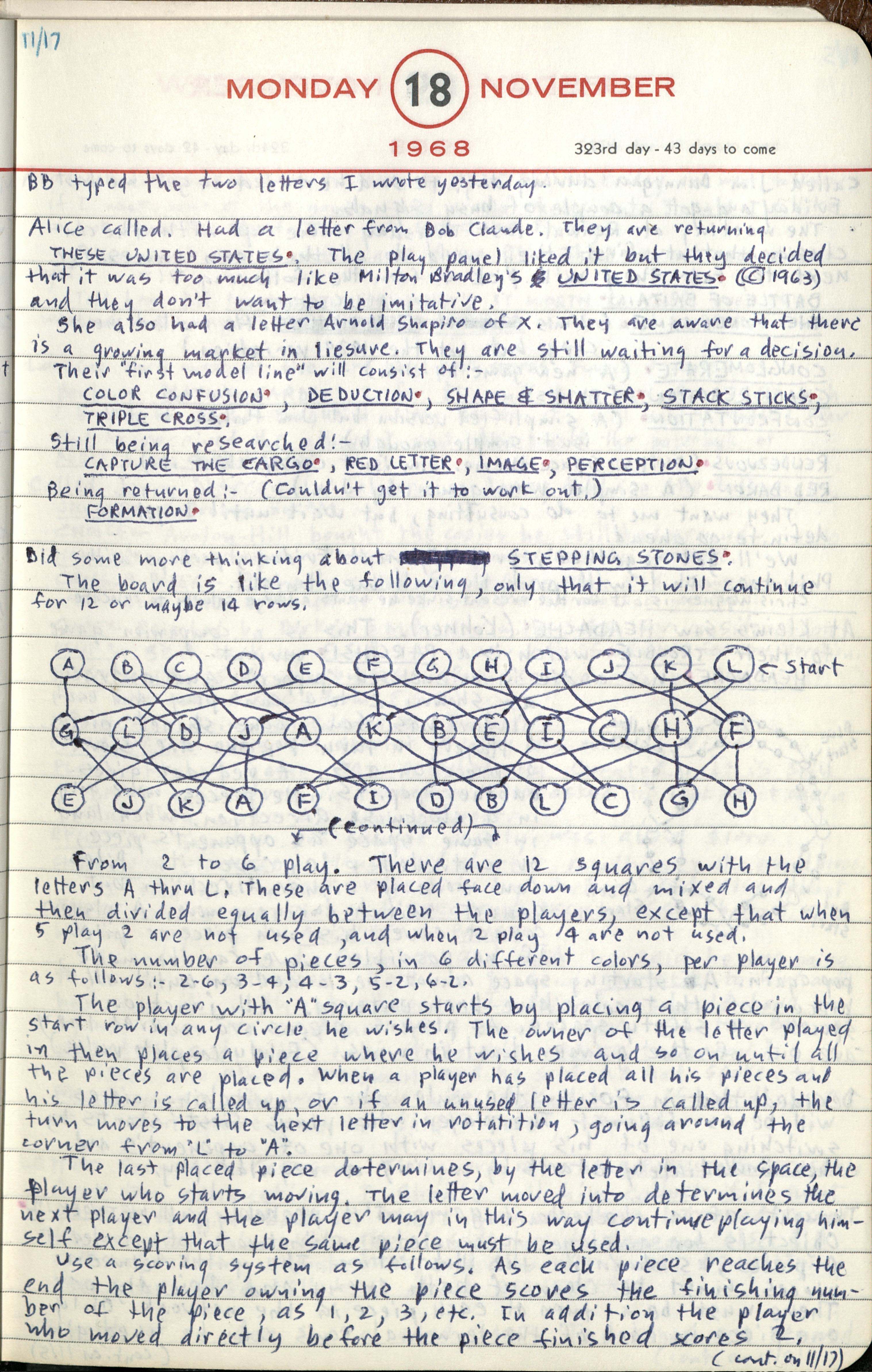Notes for 1968_Sackson_341_November 18.jpg: Page #1
Original title: 1968_Sackson_341_November 18.jpg

Transcription
11/17
MONDAY 18 NOVEMBER 1968 323rd day - 43 days to come
BB typed the two letters I wrote yesterday.
Alice called. Had a letter from Bob Claude. They are returning THESE UNITED STATES. The play panel liked it but they decided that it was too much like Milton Bradley's UNITED STATES ( (c) 1963) and they don't want to be imitative. She also had a letter Arnold Shapiro of X. They are aware that there is a growing market in leisure. They are still waiting for a decision. Their "first model line" will consist of:- COLOR CONFUSION, DEDUCTION, SHAPE & SHATTER, STACK STICKS, TRIPLE CROSS. Still being researched:- CAPTURE THE CARGO, RED LETTER, IMAGE, PERCEPTION Being returned:- (couldn't get it to work out.) FORMATION
Did some more thinking about STEPPING STONES. The board is like the following, only that it will continue for 12 or maybe 14 rows.
[diagram of three rows of 12 circles each, connected with various lines, labeled with mixed letters from A-L]
(continued)
From 2 to 6 play. There are 12 squares with the letters A thru L. These are placed face down and mixed and then divided equally between the players, except that when 5 play 2 are not used, and when 2 play 4 are not used. The number of pieces, in 6 different colors, per player is as follows:- 2-6, 3-4, 4-3, 5-2, 6-2. The player with "A" square starts by placing a piece in the start row in any circle he wishes. The owner of the letter played in then places a piece where he wishes and so on until all the pieces are placed. When a player has placed all his pieces and his letter is called up, or if an unused letter is called up, the turn moves to the next letter in rotation, going around the corner from "L" to "A". The last placed piece determines, by the letter in the space, the player who starts moving. The letter moved into determines the next player and the player may in this way continue playing him- self except that the same piece must be used. Use a scoring system as follows. As each piece reaches the end the player owning the piece scores the finishing num- ber of the piece, as 1, 2, 3, etc. In addition the player who moved directly before the piece finished scores 2. (cont. on 11/17)